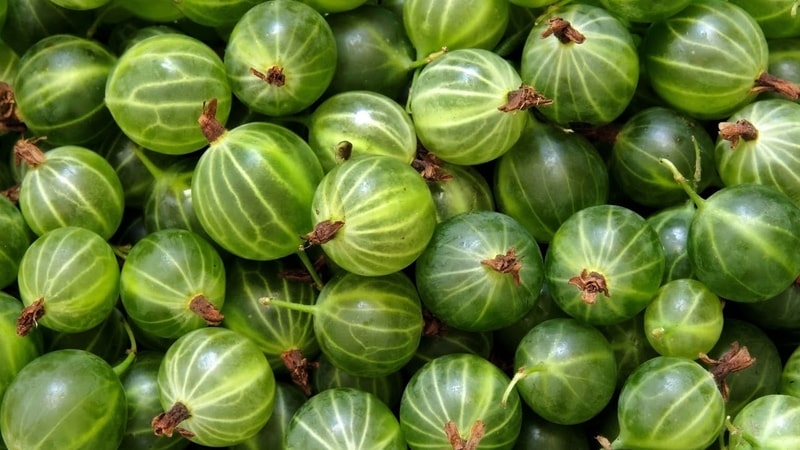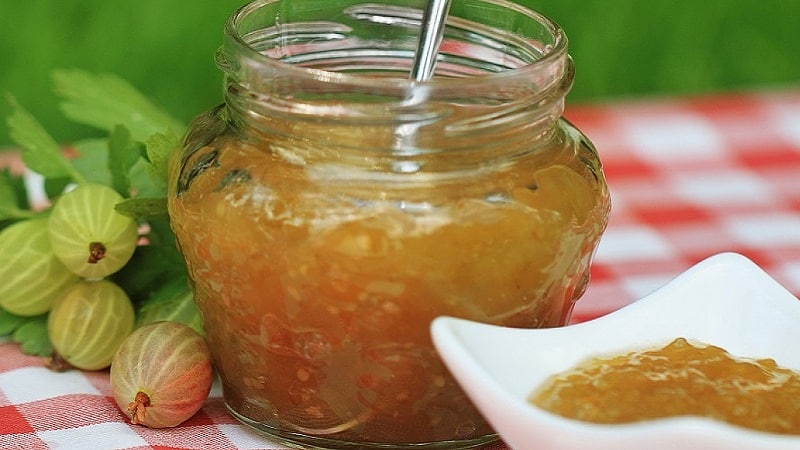How to properly freeze gooseberries for the winter in the freezer: the best ways
Gooseberries contain vitamins, minerals, fruit acids, and essential oils. Berries strengthen the immune system, protect against colds, and prevent the negative effects of free radicals on the body. Gooseberry lovers are less likely to suffer from dangerous diseases such as diabetes, Alzheimer's and Parkinson's diseases, and heart and vascular pathologies.
If fresh gooseberries are available in the summer, then in the cold season you should eat them frozen. To preserve their taste and valuable substances for the body, it is important to know how to properly freeze gooseberries for the winter in the freezer at home. If stored incorrectly, the product not only becomes useless, but can also be harmful to health.
Is it possible to freeze gooseberries?

The best method for preserving gooseberries for the winter is freezing in the freezer. The berries are ideal for freezing, as they contain pectin, which maintains the tense state of the shells and prevents water from penetrating into plant cells.
Over 1000 varieties of gooseberries have been bred, differing in taste, size, color of berries, chemical composition, purpose, and fruiting. All these properties must be taken into account when choosing a product to prepare for the winter. The varieties with thick skin and sweet pulp are most suitable for freezing: Yubileiny, Date, Rodnik, Serenade, Kolobok, Kazachok, White Nights, Harlequin, Aristocrat.
The advantages and disadvantages of frozen gooseberries are listed in the table.
| Advantages | Flaws |
| Increased shelf life. Depending on the temperature conditions and technical characteristics of the freezer, gooseberries are stored from 3 months to 2 years. | Slight change in taste.
|
| Preserving the freshness and appearance of berries. | The likelihood of damage to packaging for storing products under the influence of low temperatures, which leads to a loss of organoleptic properties of the product. |
| Minimal loss of vitamins, micro- and macroelements valuable for the body in the composition of the fruit. | The duration of defrosting takes on average 10-18 hours. |
| Preparation does not require much time, additional financial expenses, or special culinary skills. | Berries can absorb extraneous unpleasant odors. |
| Creating optimal storage conditions for perishable varieties, reducing the amount of waste. | With a large harvest, the volume of frozen products is limited by the size of the freezer. |
| Possibility to eat fresh fruits in the off-season. |
Selection and preparation of berries

For food consumption, ideally use gooseberries from your own harvest or grown in guaranteed safe conditions without pesticides. When buying beautiful fruits at the market, store or supermarket, you cannot be sure of their quality. When growing them, chemicals are often used to stimulate growth, fertilizers, and protective agents that are toxic to the human body.
Berries for freezing are harvested when they are most ripe and contain the most vitamins and minerals, i.e. in June - August. The ripening period depends on the variety, climatic and weather conditions.
When harvesting or purchasing a product on the market, it is important to evaluate the quality of gooseberries, paying attention to appearance, smell, and taste.Good berries are moderately elastic to the touch and of the same size. If the fruits are too hard, it means they have not reached maturity; if they are soft, they are already overripe. The presence of black spots on the gooseberries is allowed - this is a sign of maturity, characteristic of some varieties. Berries spoiled by pests are not suitable for consumption and long-term storage.
Advice. It is better to harvest early in the morning in sunny weather. The fruits must be dry, otherwise they will quickly spoil.
The next stage is preparing gooseberries for freezing for the winter:
- Rinse the berries until the water is clear, remove leaves, foreign debris, rotten, spoiled, too soft and green fruits.
- Place the gooseberries in a colander and allow excess water to drain. Then transfer to a paper towel or cotton cloth to absorb all the moisture.
This is interesting:
How to properly freeze carrots for the winter in the freezer.
We choose how to cover the onions from frost for the winter and study the nuances of the process.
How to freeze gooseberries for the winter in the freezer at home: methods

Harvesting gooseberries for the winter at home can be done in different ways. Depending on taste preferences and purpose, the berries are frozen whole, in the form of puree, in syrup or sugar. If the recipe contains other products, such as sugar, the calorie content of the product increases.
For storage in the freezer, use plastic sealed containers or special bags. The latter are convenient because you can write the date and time of preparation on them.
Advice. If you choose food containers, choose wide containers with low sides so that the berries freeze faster and more evenly.
Whole berries

This is the easiest and fastest way.Suitable for fruits with thin skin, it allows you to preserve the integrity of the berries, taste and beneficial properties.
How to freeze whole berries:
- Rinse the fruits with running water, sort them, remove spoiled, rotten, and foreign debris.
- Place the gooseberries in a sieve to drain, then transfer to a paper towel and let dry.
- Dry berries in a single layer and spread loosely on a shallow platform (such as a produce board or tray). Place in the freezer for 6-8 hours.
- Take out the frozen berries, let them stand for a few minutes at room temperature, and place them in the prepared container. Store in the freezer.
As a puree

Gooseberries in this form are used to prepare compotes, desserts, jelly, and drinks.
Recipe:
- Grind clean and dry berries using a blender, meat grinder or wooden masher.
- Add granulated sugar to the resulting slurry at the rate of 300-500 g per 1 kg of gooseberries. The amount of sugar can be adjusted depending on the type of berry and taste preferences. Mix everything.
- Place the mixture in prepared plastic containers for storing food. Leave in the refrigerator for a day, then transfer to the freezer.
In syrup
According to this recipe, you can freeze not only whole and elastic fruits, but also soft, overripe ones, which reduces the amount of waste.
How to freeze gooseberries in syrup for the winter:
- Prepare the berries: sort through, remove spoiled and foreign debris, rinse and dry.
- Prepare the syrup: add sugar to water and boil. After boiling, cook over low heat for 5 minutes, stirring constantly. Cool.
- Place gooseberries in food containers and pour chilled syrup over them. Mix carefully.Place in the freezer for storage.
In sugar

For 1 kg of gooseberries you will need 300 g of sugar. For sour varieties, the amount of granulated sugar can be increased to 400-500 g.
Recipe:
- Place clean and dry gooseberries in food storage containers, sprinkle sugar on top, and mix gently.
- Next, immediately send the container to the freezer or first put it in the refrigerator so that the sugar is saturated with juice, and then move it to the freezer for further storage.
Shelf life

How long gooseberries can be stored in the freezer depends on the temperature. If the freezing temperature is about −18°C, the shelf life is six months. With low-temperature storage, you can get a huge supply of time and store the berries for 24 months.
Advice. If the refrigerator operates intermittently or is not able to maintain a constant temperature, it is better not to risk it and keep it frozen for no more than 3 months. The product must not be re-frozen.
How to defrost gooseberries correctly
You should not defrost gooseberries at room temperature or in a microwave oven, as in such conditions there is a high probability that the berries will turn into a tasteless mush.
Defrosting is best done in the refrigerator on the bottom shelf. The process is long, takes at least 8-10 hours, but is the most optimal in terms of health safety and preservation of the beneficial and taste qualities of gooseberries. If you need to defrost the berries as soon as possible, you can fill them with warm water and immediately use them for cooking.
Read also:
Is it possible to freeze horseradish for the winter and how to do it correctly.
How to properly freeze grapes for the winter in the freezer and is it possible to do this?
The best ways to freeze raspberries for the winter correctly.
Conclusion
Freezing gooseberries for the winter is a simple and affordable way to preserve the product. This makes it possible not only to enjoy berries all year round, but also to take care of your health, since the fruits are rich in vitamins, minerals, and organic acids, which are important for maintaining the normal functioning of organs and systems.
In winter, the body experiences a deficiency of micro- and macroelements, which can subsequently cause painful conditions. To prevent this, gooseberries and other summer berries are prepared for the winter.